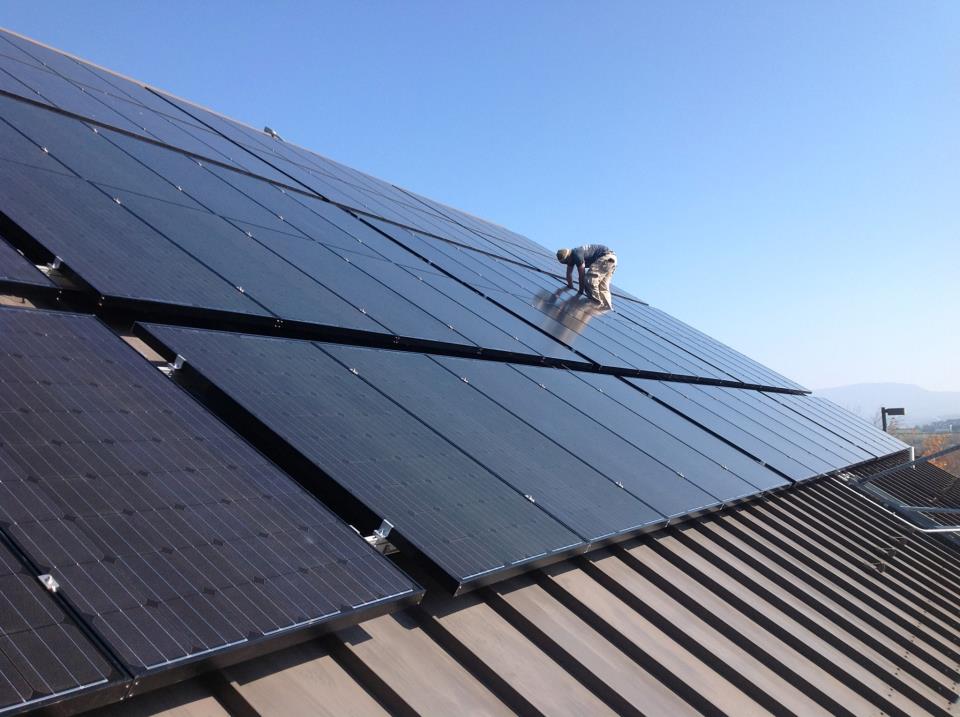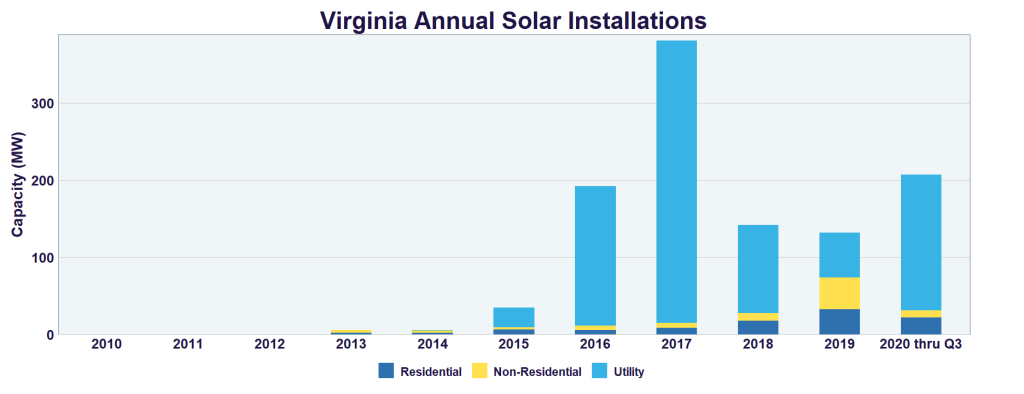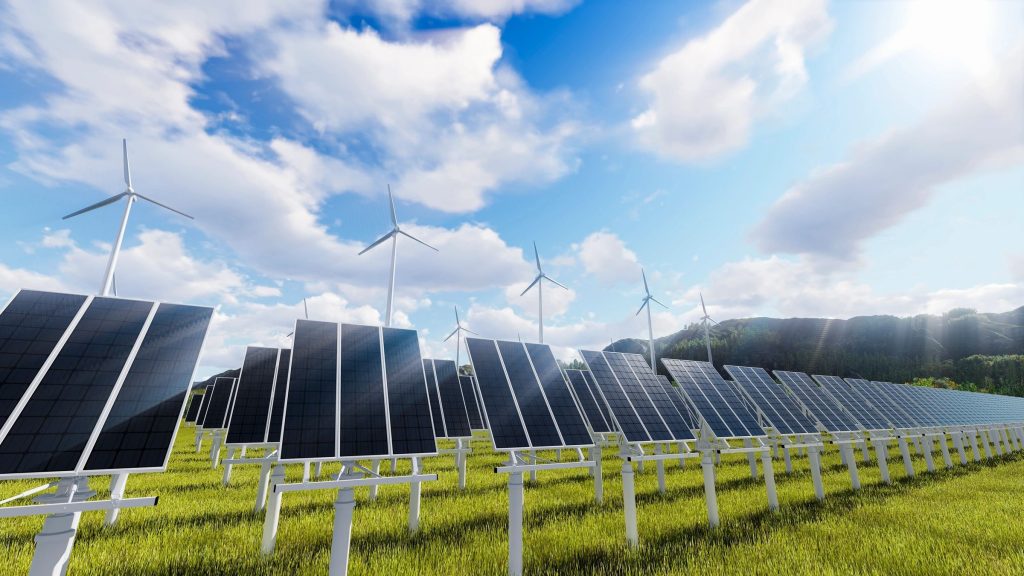Dec 29, 2020
Reaching Virginia’s Clean Energy Goals Will Require Solar Everywhere from Homes to Schools to Utilities
Virginia Governor Ralph Northam and the General Assembly have set a goal to make the state’s electricity grid 100% clean by 2050. If there is any hope for us to achieve this target, it will take a commitment from a team of companies and organizations dedicated to renewable energy– especially utility-scale solar and distributed solar.

“These new clean energy laws propel Virginia to leadership among the states in fighting climate change,” said Virginia Governor Ralph Northam when he signed the Virginia Clean Economy Act into law in April of 2020. “They advance environmental justice and help create clean energy jobs. In Virginia, we are proving that a clean environment and a strong economy go hand-in-hand.”
We’ve already written about why we agree that the new legislation is groundbreaking for clean energy in Virginia. Here, we’d like to talk about how this goal will require all players in renewable energy to work together. This is especially true for both distributed and utility-scale solar power.
As a commercial-scale solar power developer, we bring behind-the-meter rooftop and ground-mount solar systems to our customers. These range from schools, universities, hospitals and government buildings so they can benefit from solar energy.
Distributed solar power offers multiple benefits. It helps customers save money and can be placed on rooftops or marginal plots. For commercial customers on peak demand tariffs, it can directly help shave peak demand, as our peer-review article in Solar Today makes clear. Not only this, but it serves as a visible sign that a solar customer is going green.
It’s good news for everybody that rooftop solar has been growing quickly across the nation. And with the enactment of the Virginia Clean Economy Act, it is poised to explode in Virginia. We’d love to see every suitable rooftop in the state covered in solar panels over the coming years. And now that vision appears more attainable than ever. But we need to complement rooftop solar with utility-scale solar to achieve our ambitions for a clean energy economy.
Teamwork Makes the Dream Work
To meet Governor Northam’s goal for a 100% clean electric grid, Virginia will need to tap clean energy from as many sources as possible. More specifically, those that can provide a lot of power all at once like utility-scale solar.

While a large distributed solar power system can boast a capacity of up to several megawatts, it will always be dwarfed by centralized solar generating fields operated by utility companies. Some utility-scale solar power facilities start at 20 megawatts and go up to 500 megawatts or even more. These provide a clean alternative to traditional energy generation from coal and natural gas, helping to cut greenhouse gas pollution.
For nearly a decade, large solar arrays have led the spread of solar across America, as prices for utility-scale solar have declined 82% since 2010. Large solar projects allow more and more American homes and businesses to access clean energy in the most convenient way. Just by paying their electric bill, utility customers can support the expansion of solar power across the electric grid.
Utility-operated solar arrays can also include energy storage capacity which provides power even when the sun is not shining. This increases grid reliability and gives solar power room to grow as a percentage of the total power mix.
Over the past decade, we have also seen a dramatic transformation in attitudes towards solar power. Not just acceptance from residents, but even Dominion Energy and other Virginia utilities have come to embrace clean energy. Their business plans recognize that solar is often the least-cost source of new generation. Not only this, but utilities have made progress meeting customer demand for solar power on the grid. We believe it is due to more Virginians demanding that power be not just affordable and reliable but also clean.

Of course, we wouldn’t be a true distributed solar developer if we didn’t note that utilities still have some work left to do to fully support the spread of solar power. To reach 100% clean power by 2050, Virginia will need a lot of large-scale solar generation. But we’ll also need a lot more rooftop solar. To allow Virginians free access to both kinds of solar, progress needs to continue on removing regulatory barriers to new solar arrays at all scales.
Supporting Utility-scale Solar in Virginia
That’s why we support our friends at utility-scale solar in Virginia on public advocacy to continue to update our state’s electricity regulations. It will take every member of the state’s grand clean energy coalition, from solar developers of all sizes, to wind power developers, to companies that make buildings more energy efficient and help large electricity customers manage their energy usage, to nonprofit organizations that push to protect the environment, create good jobs made in the USA and fight for social equity.
Finally, we can never say enough good things about the customers who have made the commitment to go solar. From homeowners to schools and hospitals to enlightened electric utilities, people and organizations across Virginia have decided to step up to the front of the movement to make our economy both prosperous and clean. These are the real heroes in the story of solar power in Virginia.
We appreciate all the work that our partners have done to make strides in achieving our shared mission and look forward to continuing fighting the good fight together.